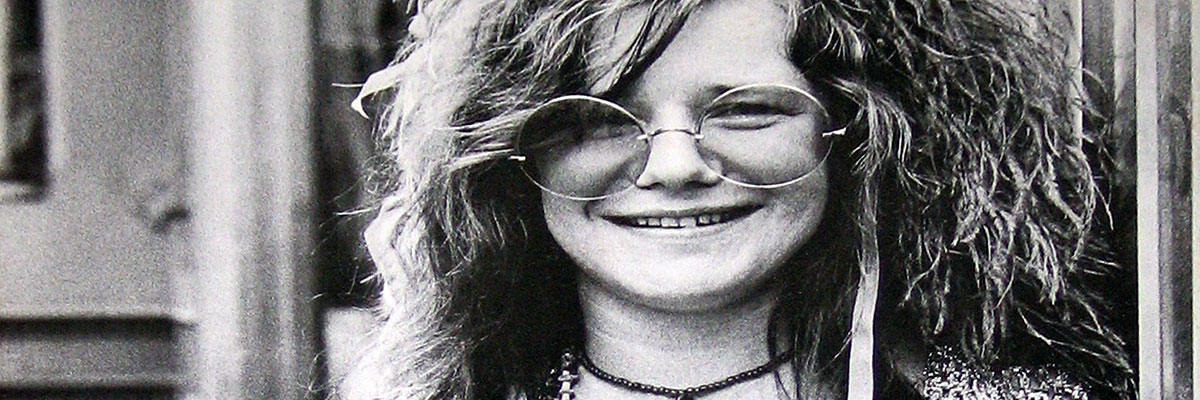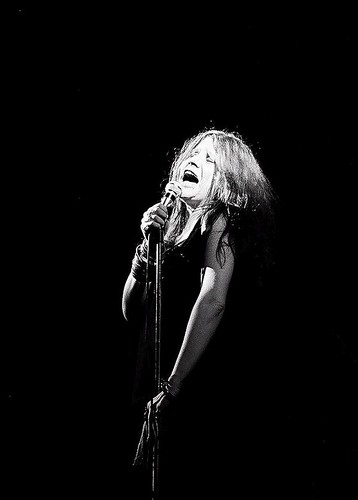
Janis Lyn Joplin, a name synonymous with raw power, unbridled emotion, and an “electric” stage presence, carved an indelible mark on the landscape of rock and roll during her tragically short life. As one of the most iconic and successful rock performers of her era, her mezzo-soprano vocals captivated audiences, pushing the boundaries of what a female vocalist could achieve in a male-dominated industry. Yet, beneath the dazzling stage lights and the roaring crowds lay a profound story of vulnerability, struggle, and the relentless pressures that would ultimately lead to her untimely death at the age of 27. Her legend, solidified posthumously with achievements like a number-one single and induction into the Rock and Roll Hall of Fame, continues to resonate deeply within music history.
Our journey into the life and final hours of Janis Joplin aims to peel back the layers of myth and legend, revealing the human being behind the hurricane of sound. In the tradition of in-depth investigative reporting, we seek to connect the threads of her formative experiences, her meteoric rise to stardom, and the personal demons that shadowed her path. This isn’t merely a recounting of facts, but a narrative exploration of a life lived intensely, marked by both extraordinary triumphs and heartbreaking fragility. It’s an attempt to understand the forces that shaped her art and, tragically, her destiny.
As we delve into the intricate tapestry of Joplin’s world, we will meticulously examine the pivotal moments, relationships, and decisions that converged in her final chapter. From the ostracization of her youth and the discovery of the blues, through her challenging stints with various bands and the relentless demands of fame, to the complex network of addiction and creative output, each element contributed to the tragic conclusion. Our focus remains firmly on the factual information provided, allowing her story to unfold with the authority and credibility it deserves, providing a comprehensive understanding of her official cause of death within its broader cultural context.
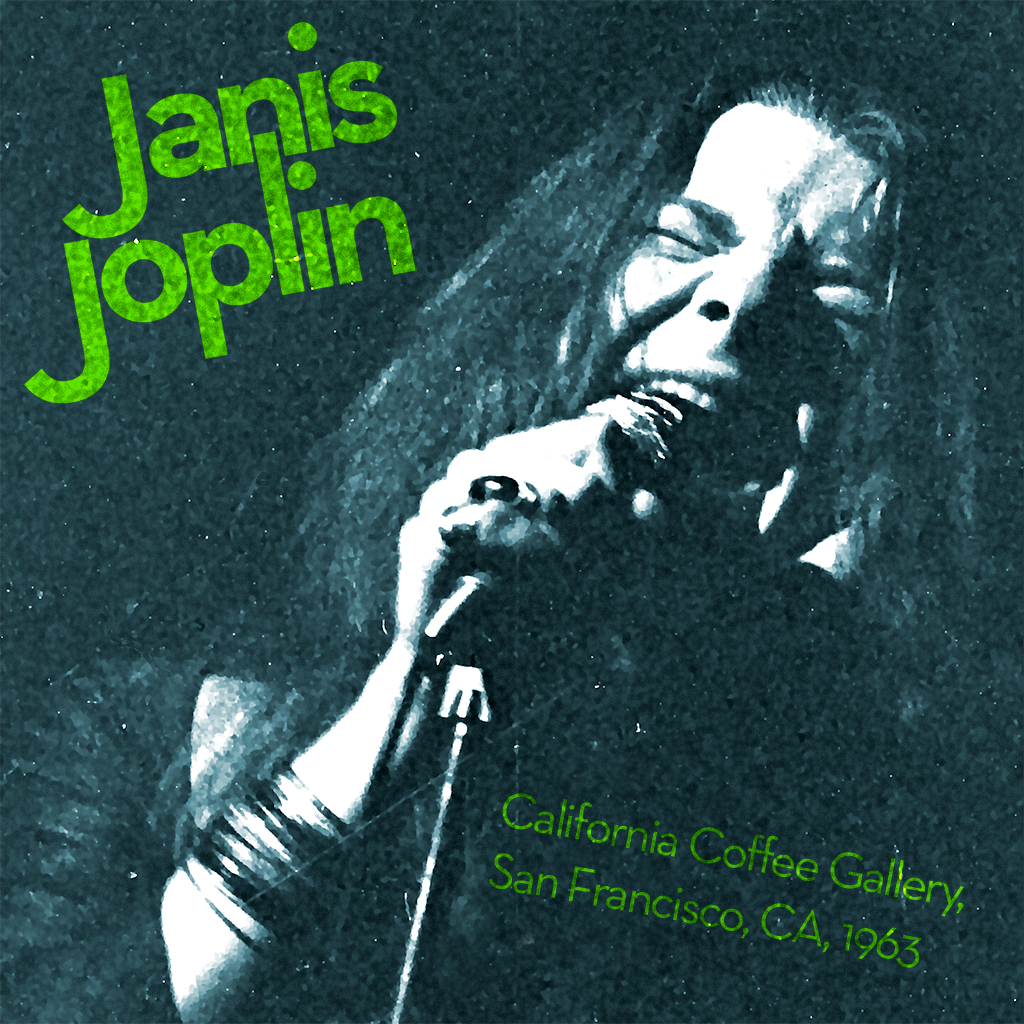
1. **Her Formative Years in Port Arthur: Ostracization and the Discovery of the Blues**Janis Lyn Joplin was born in Port Arthur, Texas, on January 19, 1943, to Dorothy Bonita East, a registrar at a business college, and Seth Ward Joplin, an engineer at Texaco. She was the eldest of three children, with two younger siblings, Laura and Michael. Her parents harbored a deep concern, feeling that Janis needed more attention than their other children, perhaps sensing an inherent sensitivity or an unconventional spirit that set her apart even from a young age.
Growing up, Joplin faced significant challenges, particularly during her high school years, where she experienced profound ostracization and bullying. Her peers would routinely taunt her with cruel names like “pig,” “freak,” “n-word lover,” or “creep.” This period was undoubtedly difficult, compounded by her struggles with being overweight and suffering from acne, which left her with deep scars requiring dermabrasion. Reflecting on this time, Joplin herself articulated, “I was a misfit. I read, I painted, I thought. I didn’t hate black people,” a statement that powerfully encapsulates her sense of alienation and her emerging independent spirit.
Amidst this difficult adolescence, a pivotal transformation began. Joplin befriended a group of outcasts, individuals who shared a different perspective on life and, crucially, a different taste in music. It was through one of these friends that she was introduced to albums by legendary blues artists such as Bessie Smith, Ma Rainey, and Lead Belly. This exposure proved to be a profound awakening for the young Janis, who later credited these artists with directly influencing her decision to become a singer, marking the true genesis of her musical journey as she began singing blues and folk music with friends at Thomas Jefferson High School.
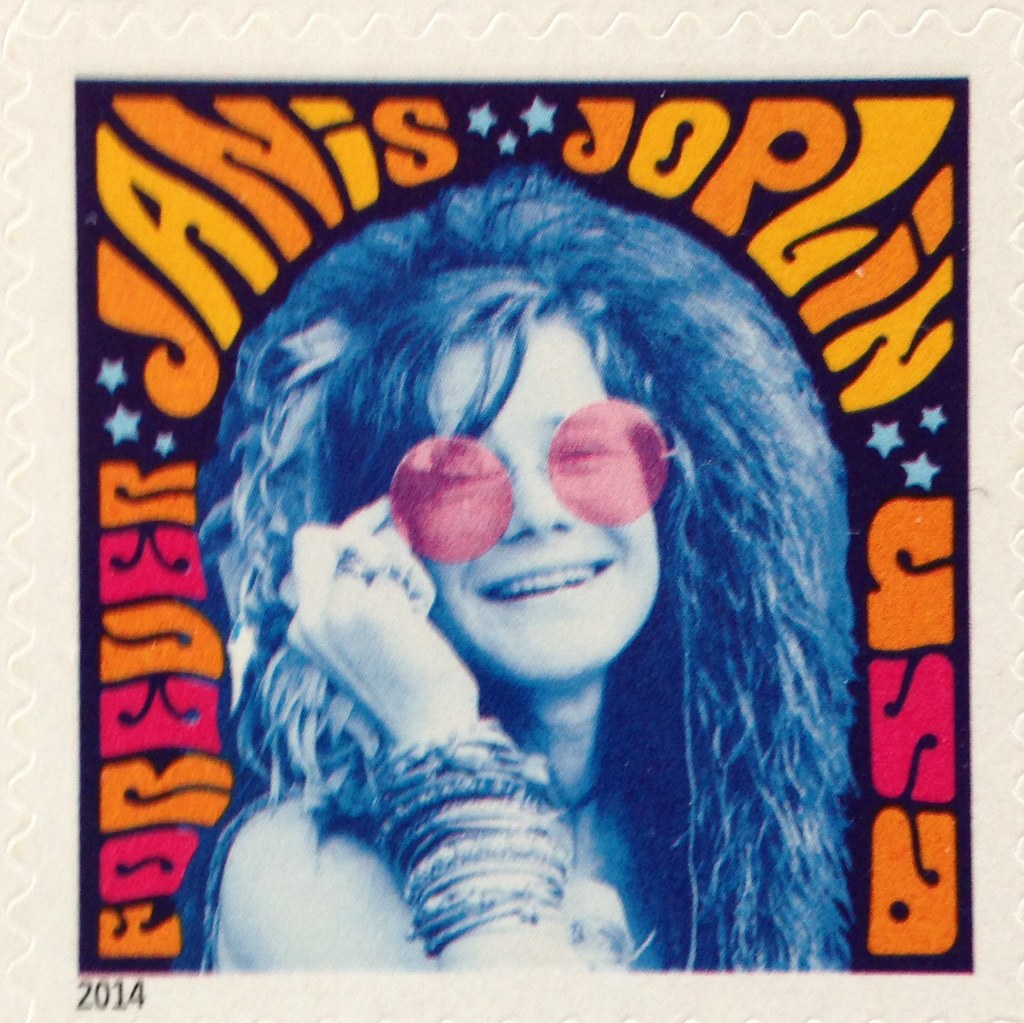
2. **The Tumultuous First San Francisco Stint: Early Experiments with Drugs and a Reputation as a “Speed Freak”**
After graduating high school in 1960, Joplin’s path diverged from conventional expectations. She attended Lamar State College of Technology in Beaumont, Texas, during the summer, and later the University of Texas at Austin (UT), though she ultimately did not complete her college studies. Her distinctive personality, even then, was undeniable. The campus newspaper, The Daily Texan, ran a profile of her on July 27, 1962, boldly headlined “She Dares to Be Different.” The article opened with a vivid description: “She goes barefooted when she feels like it, wears Levi’s to class because they’re more comfortable, and carries her Autoharp with her everywhere she goes so that in case she gets the urge to break into song, it will be handy. Her name is Janis Joplin.” During her time at UT, she performed with a folk trio called the Waller Creek Boys, showcasing her already strong mezzo-soprano vocals.
In January 1963, seeking to escape the confines of her past, Joplin hitchhiked with her friend Chet Helms to North Beach, San Francisco, articulating her departure by stating, “Just to get away, because my head was in a much different place.” While in San Francisco in 1964, a significant, though largely unknown at the time, musical collaboration occurred. Joplin and future Jefferson Airplane guitarist Jorma Kaukonen recorded a series of blues standards, a session that notably included the incidental sound of Kaukonen’s wife, Margareta, using a typewriter in the background. This informal session, comprising seven tracks, was later released posthumously as the bootleg album “The Typewriter Tape.”
However, this period also marked a darker turn in Joplin’s life. In 1963, she was arrested in San Francisco for shoplifting, an early indication of a burgeoning recklessness. Over the next two years, her drug use significantly escalated, leading her to acquire a reputation as a “speed freak” and an occasional heroin user. She also experimented with other psychoactive drugs and maintained a heavy drinking habit throughout her career, with Southern Comfort becoming her famously preferred alcoholic beverage.
By May 1965, the detrimental effects of her regular methamphetamine injections became alarmingly apparent. Friends in San Francisco, witnessing her described state as “skeletal” and “emaciated,” intervened, urging her to return to Port Arthur. In a gesture of desperate care, her friends even organized a bus-fare party to facilitate her journey back to her parents in Texas. Years later, Joplin starkly summarized her feelings about this initial San Francisco chapter to Rolling Stone magazine writer David Dalton: “I didn’t have many friends and I didn’t like the ones I had.”
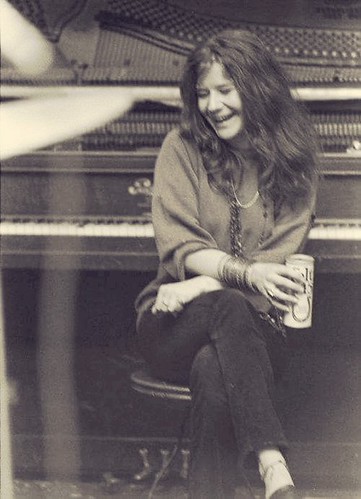
3. **A Brief Return to Stability: Attempting Normalcy in Texas, Academic Pursuits, and a Failed Engagement**
Upon her return to Port Arthur in the spring of 1965, Janis Joplin’s parents were confronted with the stark reality of her condition, noting her alarming weight of just 88 pounds (40 kg). This stark visual prompted a concerted effort on Janis’s part to transform her lifestyle. She consciously avoided drugs and alcohol, adopted a more conventional beehive hairdo, and enrolled as an anthropology major at Lamar University in nearby Beaumont, Texas. Her sister, Laura, would later clarify in a 2016 interview that social work was her declared major during her year at Lamar, suggesting a burgeoning sense of social consciousness.
During her time at Lamar University, Joplin continued to nurture her musical inclinations, commuting to Austin to perform solo, accompanying herself on an acoustic guitar. One notable performance during this period was at a benefit organized by local musicians for the ailing Texas bluesman Mance Lipscomb. These smaller, acoustic performances were a testament to her enduring passion for music, even as she sought a more stable existence away from the chaotic scene of San Francisco.
In the fall of 1965, Joplin became engaged to Peter de Blanc, a relationship that had begun toward the end of her first turbulent stint in San Francisco. De Blanc, who worked with IBM computers and lived in New York, traveled to Port Arthur to formally ask her father for her hand in marriage. Joplin and her mother began the hopeful process of planning the wedding, a poignant image of domesticity that seemed a world away from her earlier bohemian life.
However, this fragile period of stability proved short-lived. De Blanc, whose work required him to travel frequently, ended the engagement soon afterward. This personal disappointment, coupled with her ongoing internal struggles, underscored the difficulty Joplin faced in maintaining a conventional life, hinting at the powerful forces that continued to pull her towards a different, more turbulent destiny.
Her experiences during this time included regular sessions with a psychiatric social worker, Bernard Giarritano, at a counseling agency funded by the United Fund. Interviewed after her death by biographer Myra Friedman, Giarritano recalled Joplin’s profound dilemma: how could she pursue a professional career as a singer without relapsing into drug use? Her drug-related memories from San Francisco continued to frighten her. She would sometimes bring her acoustic guitar to sessions, her singing audible to others in the building. Giarritano tried to reassure her that success in music did not necessitate narcotics. Yet, Joplin also expressed the stark alternative: becoming a keypunch operator, or a secretary, then a wife and mother, thereby becoming “similar to all the other women in Port Arthur,” a path she clearly rebelled against. Approximately a year before joining Big Brother and the Holding Company, she recorded seven studio tracks with her acoustic guitar, including her original composition “Turtle Blues” and an alternate version of “Cod’ine” by Buffy Sainte-Marie, later released in 1995 as “This is Janis Joplin 1965.”
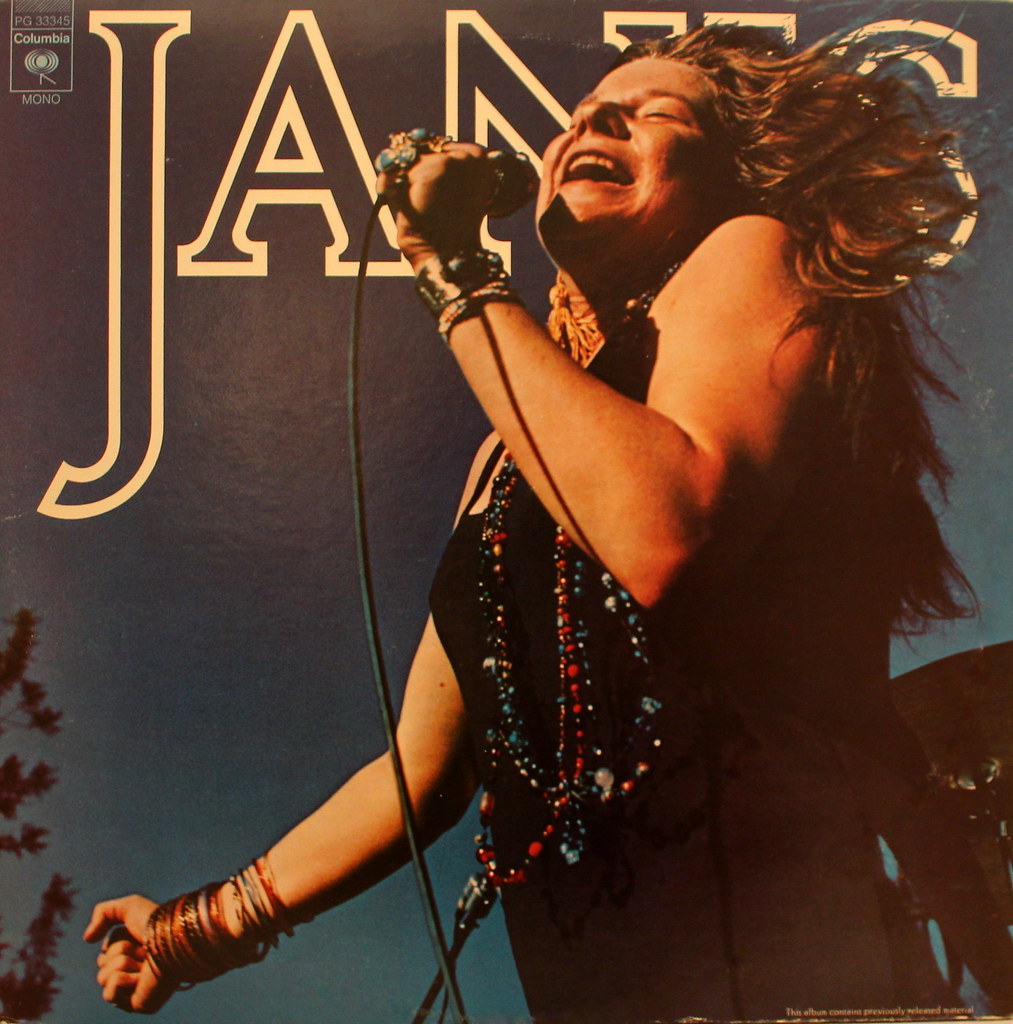
4. **The Fateful Call to San Francisco: Joining Big Brother and the Holding Company and Initial Drug Discipline**
In 1966, Joplin’s unique and powerful bluesy vocal style once again drew her back to the epicenter of the counterculture movement. It caught the attention of Big Brother and the Holding Company, a San Francisco-based psychedelic rock band that was rapidly gaining renown among the nascent hippie community in Haight-Ashbury. This was the moment of destiny, bringing her into the orbit of the group that would propel her to global stardom.
Her recruitment to the band was facilitated by Chet Helms, the very promoter with whom she had hitchhiked from Texas to San Francisco a few years prior. Helms dispatched his friend Travis Rivers to locate her in Austin, Texas, where she had been performing with her acoustic guitar, and to escort her back to San Francisco. Interestingly, Joplin initially conveyed to her parents the impression that Austin was her final destination and the location of the rock band she was joining, perhaps attempting to mitigate their concerns about her return to a city associated with her past troubles. Joplin officially joined Big Brother on June 4, 1966, making her first public performance with them at the Avalon Ballroom in San Francisco. It was soon after this that her parents received a letter, revealing her true whereabouts in San Francisco, not Austin.
During her initial period with Big Brother, Joplin maintained a strict discipline regarding drug use, a testament to her recent attempts at sobriety in Texas. When she shared an apartment with Travis Rivers upon their arrival in San Francisco, she extracted a solemn promise from him that using needles would not be permitted in their dwelling. This commitment was profoundly tested during a chilling incident recalled by bandmate Dave Getz 25 years later. Accompanying Joplin from a rehearsal to her home, Getz found Rivers absent, but “two or three” guests invited by Rivers were in the process of injecting drugs. Getz vividly described Joplin’s reaction: “Janis went nuts! I had never seen anybody explode like that. She was screaming and crying and Travis walked in. She screamed at him: ‘We had a pact! You promised me! There wouldn’t be any of that in front of me!'” Her raw, visceral outburst underscored the deep trauma associated with her previous drug abuse and her desperate desire to avoid a relapse.
Despite the internal and external pressures, the band soldiered on. A San Francisco concert from that summer of 1966 was recorded and later released in 1984 as the album “Cheaper Thrills.” The band experienced some early difficulties, including a four-week engagement in Chicago where the promoter ran out of money, leaving them stranded. In these unfortunate circumstances, they signed with Bob Shad’s Mainstream Records. Early recordings for the label in Chicago in September were deemed unsatisfactory, leading the band to return to San Francisco, where they continued to perform live, including at the Love Pageant Rally. Mainstream Records did release a single featuring “Blindman” and “All Is Loneliness,” but it did not achieve significant sales. Towards the end of 1966, Big Brother made a strategic change, switching managers from Chet Helms to Julius Karpen.
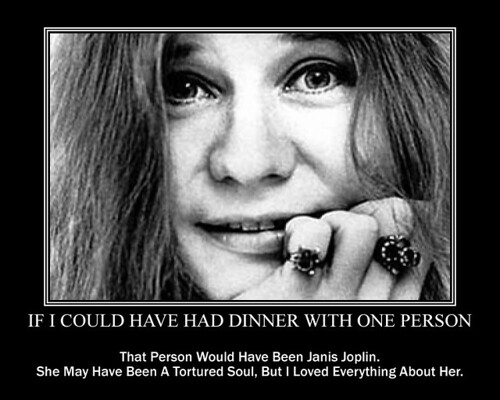
5. **Breaking Through at Monterey Pop Festival: A Star Is Born and the Raw Power of Her Performance**
The year 1967 proved to be the pivotal moment for Janis Joplin and Big Brother and the Holding Company, largely due to their electrifying appearance at the Monterey Pop Festival in June. It was here, before a massive and appreciative audience, that Joplin’s raw, uninhibited performance transcended the confines of the San Francisco scene and exploded onto the national consciousness, cementing her status as a genuine rock star. The festival, a cornerstone event of the counterculture, provided the perfect platform for her unique talent.
Their debut studio album, “Big Brother & the Holding Company,” was subsequently released by Mainstream Records in August 1967, capitalizing on the group’s newfound visibility following Monterey Pop. This initial release included two tracks, “Coo Coo” and “The Last Time,” which were released separately as singles, along with the tracks from their previous unsuccessful single, “Blindman” and “All Is Loneliness.” The album, though a debut, captured the band’s burgeoning sound.
The true testament to Joplin’s rising star power came when Columbia Records took over the band’s contract. They re-released the album, notably adding “featuring Janis Joplin” prominently on the cover, a clear indication that she was now recognized as the undeniable focal point of the group. This strategic move by Columbia validated the public’s fascination with her powerful vocals and charismatic stage presence, shifting the spotlight squarely onto Janis.
The re-released debut album yielded several minor hits that showcased Joplin’s incredible vocal range and interpretive skill. These included “Down on Me,” a traditional song arranged by Joplin herself, “Bye Bye Baby,” “Call On Me,” and “Coo Coo.” These tracks, though not massive chart-toppers, were crucial in establishing her voice and the band’s sound within the burgeoning psychedelic rock movement, setting the stage for even greater success to come. During this period, Joplin also met Country Joe McDonald of the group Country Joe and the Fish, and the pair lived together as a couple for a few months in her Lyon Street apartment in San Francisco.
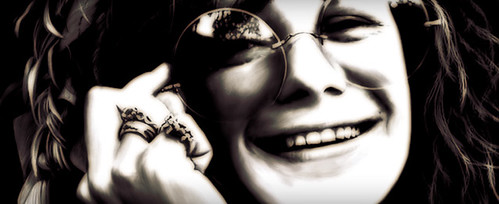
6. **The Meteoric Rise of “Cheap Thrills”: Commercial Success, Cultural Impact, and the Pressures of Fame**
The follow-up to their debut album, “Cheap Thrills,” cemented Janis Joplin’s status as a rock icon. Released in 1968, almost all of its tracks were recorded in the studio, with the notable exception of “Ball and Chain,” which was captured in front of a paying audience, lending an authentic live energy to the album. The album itself possessed a raw, visceral quality, even incorporating the accidental sound of a drinking glass breaking and its shards being swept away during the recording of “Turtle Blues,” an unexpected element that added to its organic, unpolished charm.
“Cheap Thrills” produced several immensely popular hits that became synonymous with Joplin’s explosive vocal delivery and the band’s distinctive sound. “Piece of My Heart” and “Summertime” soared in popularity, becoming anthems of the era and showcasing her ability to imbue traditional blues and rock with unparalleled emotional depth and ferocity. These songs, propelled by her captivating performances, quickly became staples of radio and live concerts.
The album’s commercial success was extraordinary. It reached number one on the Billboard 200 album chart a mere eight weeks after its release, maintaining that coveted position for an impressive eight nonconsecutive weeks. This incredible achievement, coupled with the premiere of the documentary film “Monterey Pop” at New York’s Lincoln Center for the Performing Arts on December 26, 1968, unequivocally launched Joplin into the stratosphere of superstardom, transforming her from a rising talent into a household name.
The cultural impact of “Cheap Thrills” and Joplin herself was profound. She became a symbol of liberation and raw artistic expression, captivating audiences with her unique blend of blues, rock, and soul. Her success, however, came with immense pressure, as the public and industry alike fixated on her every move, setting the stage for the escalating personal struggles that would define the next chapter of her career. The album remains a landmark in rock history, a testament to her formidable talent and enduring legacy.

7. **Transitioning to the Kozmic Blues Band: A New Sound, New Challenges, and Mounting Personal Struggles**
Following the groundbreaking success of “Cheap Thrills” and a deepening desire for more control over her musical direction, Janis Joplin made the significant decision to leave Big Brother and the Holding Company. In late 1968, she formed a new backup group, the Kozmic Blues Band, carefully assembling a lineup that included experienced session musicians like keyboardist Stephen Ryder and saxophonist Cornelius “Snooky” Flowers, alongside former Big Brother guitarist Sam Andrew and future Full Tilt Boogie Band bassist Brad Campbell. This new configuration marked a deliberate shift in her artistic approach.
The Kozmic Blues Band embraced a sound heavily influenced by the Stax-Volt rhythm and blues (R&B) and soul bands of the 1960s, drawing inspiration from legends such as Otis Redding and the Bar-Kays. This was a notable departure from the raw, psychedelic rock of Big Brother, moving towards a more structured, horn-driven, and soulful sound. This evolution showcased Joplin’s versatility and her ambition to explore different musical avenues, demonstrating her growth as an artist beyond the confines of her initial breakthrough.
However, this period, marked by intense creative output and a new musical direction, was also shadowed by a severe escalation in her personal struggles with addiction. By early 1969, alarming reports suggested Joplin was allegedly shooting at least $200 worth of heroin per day, a figure equivalent to a staggering $1,715 in 2024. Despite this, efforts were made to protect her during the recording of “I Got Dem Ol’ Kozmic Blues Again Mama!” Producer Gabriel Mekler played a crucial role, meticulously working to keep her isolated from drugs and her drug-using friends during the album’s production, highlighting the precarious balance between her artistic demands and her personal battles.
Joplin’s appearances with the Kozmic Blues Band in Europe were extensively documented in multiple films, showcasing her international appeal. The film “Janis,” reviewed by The Washington Post in 1975, captured her arrival in Frankfurt and included interviews from Stockholm and her visit to London for a gig at Royal Albert Hall. John Byrne Cooke, who served as road manager for both Joplin and the Kozmic Blues Band, later chronicled her ongoing use of narcotics, particularly when she was outside the United States, providing a stark, eyewitness account of her struggles. The album “I Got Dem Ol’ Kozmic Blues Again Mama!” was released in September 1969, and while it was certified gold later that year and reached number five on the Billboard 200, it did not quite match the commercial success of “Cheap Thrills.” Reviews were mixed; some critics, like Ralph J. Gleason, were negative, calling the new band a “drag,” while others, such as Carl Bernstein of The Washington Post, celebrated her “magic” and the “first-rate musicians” she had assembled. Columbia Records released “Kozmic Blues” as a single, which peaked at number 41 on the Billboard Hot 100.

8. **The Woodstock Experience: Triumph, Turmoil, and Heroin’s Shadow**The summer of 1969 brought Janis Joplin and the Kozmic Blues Band to the legendary Woodstock Festival, a pivotal moment in counterculture history that showcased both her immense talent and her intensifying personal battles. Joplin arrived at the festival by helicopter, accompanied by Joan Baez and Baez’s mother. As they flew over the colossal crowd, Baez recalled Joplin’s instant reaction of extreme nervousness and giddy excitement, a stark contrast to her earlier eagerness to simply perform ‘just another gig’ as she had told her band.
However, the exhilaration was quickly overshadowed by extended delays. Contractual obligations meant other bands had to perform ahead of Joplin’s set, leading to a grueling ten-hour wait in the backstage area. During this protracted period, the shadows of her past struggles lengthened. Joplin, along with her friend and occasional lover Peggy Caserta, retreated to a tent where she reportedly spent some of that time injecting heroin and consuming alcohol, a poignant illustration of the internal demons that continued to haunt her even amidst the promise of such a monumental event.
Despite the significant personal toll the wait took, Joplin ultimately delivered a powerful, if not perfectly polished, performance starting at approximately 2:00 a.m. on Sunday, August 17. She engaged frequently and authentically with the massive audience, asking if they had everything they needed and if they were staying ‘stoned,’ her raw charisma shining through. The crowd roared for an encore, to which she responded with a defiant rendition of ‘Ball and Chain.’ Yet, even a legend like Joplin was human, and Pete Townshend of The Who, who witnessed her set, later noted in his 2012 memoir, ‘She had been amazing at Monterey, but tonight she wasn’t at her best, due, probably, to the long delay, and probably, too, to the amount of booze and heroin she’d consumed while she waited. But even Janis on an off-night was incredible.’ Joplin herself was reportedly unhappy with her performance, insisting her singing not be included in the original 1970 documentary film or its soundtrack, a decision later partially reversed with the release of a director’s cut.
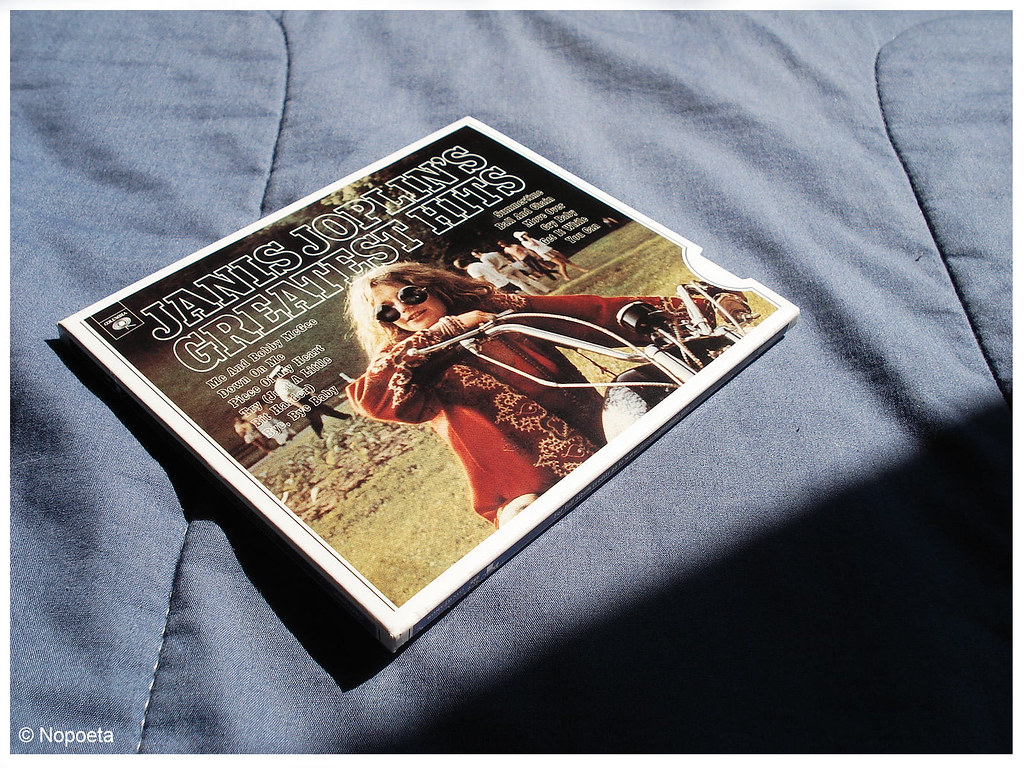
9. **Escalating Public Struggles and Legal Troubles: The Price of Unfiltered Expression**The pressures of superstardom and her increasingly public struggles with substance abuse began to manifest in escalating confrontations and legal troubles for Janis Joplin. Her raw, unfiltered persona, while part of her appeal, sometimes crossed societal boundaries, leading to direct clashes with authority. One such incident occurred on November 16, 1969, at Curtis Hixon Hall in Tampa, Florida.
During her concert, Joplin became incensed by the actions of police officers who were engaged in crowd control. In a moment of passionate defiance, she yelled, ‘Don’t f*** with those people!’ toward the officers, an outburst that quickly led to her arrest for using ‘vulgar and indecent language.’ She was subsequently found guilty and fined $200 plus court costs, a testament to the era’s stricter public decorum laws and the intensifying scrutiny surrounding rock stars and their audiences.
Beyond legal entanglements, her public performances increasingly showcased the detrimental effects of her addiction. Her publicist-turned-biographer Myra Friedman recalled a harrowing duet Joplin sang with Tina Turner during the opening act for a Rolling Stones concert at Madison Square Garden on Thanksgiving Day. Friedman painted a stark picture, stating Joplin was ‘so drunk, so stoned, so out of control, that she could have been an institutionalized psychotic rent by mania.’ An audio recording of this turbulent duet still exists online, offering a sonic glimpse into her struggles.
During another Madison Square Garden concert where Joplin had solo billing on December 19, some observers believed she actively tried to incite the audience to riot, further cementing a public image of a performer teetering on the edge. Joining her onstage for part of this concert were blues luminaries Johnny Winter and Paul Butterfield. Joplin later confided to rock journalist David Dalton that audiences at the Garden watched and listened to ‘every note [she sang] with ‘Is she gonna make it?’ in their eyes,’ revealing the profound anxiety she felt under such intense, judgmental public scrutiny.
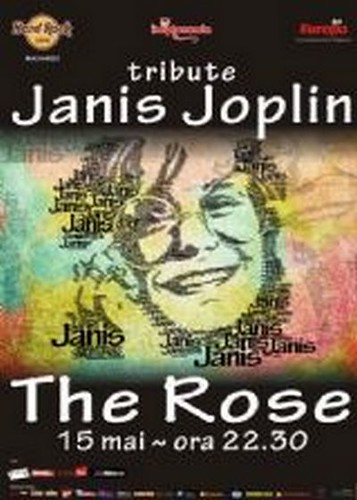
10. **A Glimmer of Hope in Brazil: An Attempt at Sobriety and a New Romance**By early 1970, the constant touring and the relentless grip of addiction had taken a significant toll on Janis Joplin. Seeking respite and a chance to reset, she made a crucial decision: to travel to Brazil in February. This journey was an explicit attempt to escape her destructive habits, and during her time there, she successfully ceased her drug and alcohol use, a remarkable feat given her history.
Joplin was accompanied on this restorative vacation by her friend Linda Gravenites, who had previously designed her stage costumes. In the vibrant, sun-drenched atmosphere of Brazil, Joplin found romance with a fellow American tourist named David (George) Niehaus, who was traveling around the world. The press captured candid photographs of Niehaus and Joplin enjoying the Rio Carnival in Rio de Janeiro, portraying a carefree, happy, and healthy young couple, a stark departure from the emaciated ‘speed freak’ image she had garnered years prior.
Her newfound tranquility and burgeoning relationship were evident in an international phone call interview with Rolling Stone magazine, where Joplin was quoted saying, ‘I’m going into the jungle with a big bear of a beatnik named David Niehaus. I finally remembered I don’t have to be on stage twelve months a year. I’ve decided to go and dig some other jungles for a couple of weeks.’ Biographer Ellis Amburn later added in 1992, ‘Janis was trying to kick heroin in Brazil, and one of the nicest things about David was that he wasn’t into drugs,’ emphasizing the positive, supportive environment Niehaus provided for her attempt at sobriety.
However, this fragile period of wellness proved tragically short-lived upon her return to the United States. Joplin quickly relapsed into heroin use. Her relationship with Niehaus soon unraveled after he witnessed her injecting drugs at her new home in Larkspur, California. The complexities of her life, including her ongoing romantic involvement with Peggy Caserta, who was also an intravenous addict, and Joplin’s reluctance to take extended time off to travel the world with him, ultimately led to the premature end of what could have been a transformative relationship, illustrating the overwhelming power of her addiction.
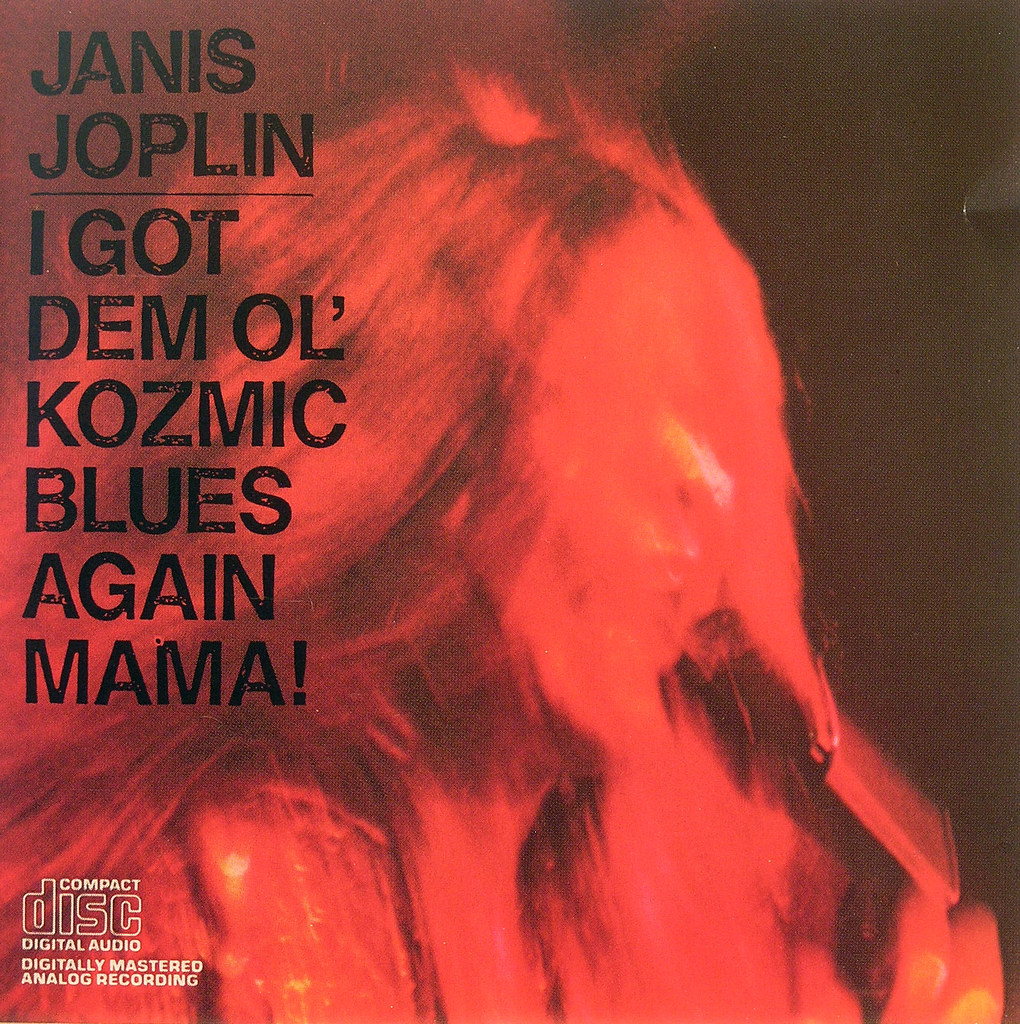
11. **”It’s My Band!”: Forming the Full Tilt Boogie Band and Renewed Artistic Control**Following the dissolution of the Kozmic Blues Band at the end of 1969, Janis Joplin was determined to forge a new musical path, one where she would have unprecedented creative control. She threw herself into forming a new band, initially known briefly as Main Squeeze, before being aptly renamed the Full Tilt Boogie Band. This iteration of her backing group was composed primarily of young Canadian musicians who had previously collaborated with Ronnie Hawkins, featuring an organ but notably omitting a horn section, signaling a stylistic shift.
Joplin’s involvement in the creation of the Full Tilt Boogie Band was far more hands-on and personal than with her previous groups. This was her vision, her sound, and her declaration was famously quoted: ‘It’s my band. Finally it’s my band!’ This statement underscored her desire for autonomy and her deep investment in shaping the musical identity that would support her powerful vocals. The band’s formation marked a renewed sense of purpose and excitement for Joplin, as she felt truly at ease with her new collaborators.
In May 1970, after an initial performance under the Main Squeeze moniker at a Hells Angels event in San Rafael, California, the newly christened Full Tilt Boogie Band embarked on a nationwide tour. Joplin was genuinely thrilled with this new group, and her satisfaction was infectious. Both her devoted fans and discerning critics largely embraced the new lineup, giving them predominantly positive feedback. Sam Andrew, Big Brother guitarist, quoted on his website, mentioned the Hells Angels party where ‘Janis’ old band and her new band will be at the same venue, so everyone is a little on edge,’ but the performance went well, with some differing opinions on her state.
Despite her vocal enthusiasm for the Full Tilt Boogie Band and her claims of being drug-free during this touring period, the reality of her struggles persisted. Biographer Ellis Amburn noted that by the time she began touring with Full Tilt Boogie, while she told people she was off drugs, her drinking had significantly increased, suggesting a continued reliance on substances to cope with the demands of her life and career, even if one addiction was ostensibly replaced by another.

12. **The “Pearl” Sessions: A Final Creative Surge Amidst Personal Chaos**In August 1970, Janis Joplin checked into the Landmark Motor Hotel in Hollywood, a place that would, unbeknownst to her, become indelibly linked with her final moments. Her purpose there was clear: to rehearse and record her next album, which would posthumously become her most successful, ‘Pearl.’ These sessions at Sunset Sound Recorders were a flurry of creative energy, a testament to her enduring artistic drive.
Amidst the intense recording schedule, Joplin rekindled a relationship with Seth Morgan, a 21-year-old UC Berkeley student, cocaine dealer, and aspiring novelist. Morgan had visited her new home in Larkspur in July and August, and their connection quickly deepened. By early September, Joplin and Morgan were engaged to be married, a poignant detail that suggests a longing for stability and personal connection even as her life spiraled towards its tragic conclusion. Despite this engagement, Morgan was only present for eight of Joplin’s many rehearsals and sessions, indicating the intermittent nature of their bond.
During late August, September, and early October 1970, Joplin and her band, guided by producer Paul A. Rothchild—renowned for his work with The Doors—labored diligently on the new album. While Joplin’s life was cut short before all the tracks could be fully completed, the sheer volume of usable material was sufficient to compile a powerful LP. The posthumously released ‘Pearl’ in January 1971 soared to number one on the Billboard 200, becoming the biggest-selling album of her career, solidifying her legacy and showcasing her artistic peak.
The album featured her biggest hit single, a searing cover of Kris Kristofferson and Fred Foster’s ‘Me and Bobby McGee,’ a song taught to her by her friend Bob Neuwirth, with Kristofferson himself having been one of Joplin’s past lovers. The opening track, ‘Move Over,’ was penned by Joplin herself, a powerful reflection of her feelings about how men treated women in relationships. Another notable composition from this period was ‘Mercedes Benz,’ a song co-written with Neuwirth and partially inspired by a Michael McClure poem, recorded in a single take just days before her death, demonstrating her incredible ability to craft timeless music right to the very end.

13. **The Last Days and Fateful Encounters: Heroin’s Relentless Grip**The final days of Janis Joplin’s life were a tragic confluence of creative triumph and deepening addiction, set against the backdrop of the Landmark Motor Hotel. Peggy Caserta, Joplin’s close friend and sometimes lover, asserted in her 1973 book, ‘Going Down With Janis,’ that she and Joplin had mutually agreed in April 1970 to distance themselves to avoid enabling each other’s drug use. However, fate, or perhaps addiction, brought them together again.
Caserta, a former Delta Air Lines flight attendant and owner of Mnasidika, a pioneering clothing boutique in Haight Ashbury, claimed in her book that by September 1970, she was actively smuggling cannabis throughout California and had checked into the Landmark Motor Hotel precisely because it attracted drug users. During Joplin’s stay at the same hotel for her ‘Pearl’ recording sessions, she learned of Caserta’s presence from a heroin dealer. Joplin, desperate, reportedly begged Caserta for heroin, and upon Caserta’s refusal, admonished her, ‘Don’t think if you can get it, I can’t get it.’ This chilling exchange, of which Joplin’s publicist Myra Friedman was unaware during Joplin’s lifetime, preceded Joplin becoming a regular customer of the same heroin dealer within days.
In these final days, Joplin was still working. On September 26, 1970, she recorded vocals for ‘Half Moon’ and ‘Cry Baby.’ The session concluded with a heartwarming gesture: Joplin, organist Ken Pearson, and drummer Clark Pierson made a special one-minute recording of the Dale Evans composition ‘Happy Trails’ as a birthday gift for John Lennon, a testament to her generous spirit even as her personal life unraveled. On October 1, 1970, she completed her last recording, the iconic ‘Mercedes Benz,’ captured in a single, unforgettable take.
Saturday, October 3, 1970, marked her last visit to Sunset Sound Recorders. She listened to the instrumental track for Nick Gravenites’s song ‘Buried Alive in the Blues,’ agreeing with producer Paul Rothchild to record the vocal the following day. Sometime that day, she learned that her fiancé Seth Morgan had invited other women to her home, leading to overheard expressions of anger, mixed with joy about the progress of the recording sessions. Later that night, she drove Ken Pearson and a male fan to Barney’s Beanery, then to the Landmark. In the hotel lobby, preparing to part ways with Pearson, she voiced a fleeting fear, perhaps in jest, that he and the Full Tilt Boogie musicians might abandon her. Then, she retired to her room, alone, for the last time.

14. **The Untimely End: Official Cause of Death and Lingering Questions**The silence from Janis Joplin’s room on Sunday evening, October 4, 1970, at the Landmark Motor Hotel quickly gave way to a chilling discovery. Her road manager and close friend, John Byrne Cooke, found her dead on the floor of her room. Initial newspaper reports indicated the presence of alcohol but no other drugs or paraphernalia, however, a later 1983 book by Joseph DiMona and Los Angeles County coroner Thomas Noguchi alleged that evidence of narcotics had been initially removed from the scene by a friend, only to be returned once the individual realized an autopsy was imminent.
Dr. Thomas Noguchi, the esteemed Los Angeles County coroner, performed the autopsy. His official determination stated the cause of death was a heroin overdose, potentially compounded by alcohol. Her death was tragically ruled accidental, a stark and somber conclusion to a life lived with extraordinary intensity. This official finding solidified the tragic reality of her long-standing battle with addiction, which ultimately claimed her at the age of 27, cementing her place in the infamous ’27 Club’ of rock legends.
However, questions and theories persisted beyond the official report. John Byrne Cooke, her road manager, held a strong belief that Joplin had inadvertently obtained a batch of heroin far more potent than what she and other Los Angeles users were accustomed to. This theory was supported by the fact that several other customers of her dealer also experienced overdoses during that same fateful weekend, suggesting a particularly lethal supply was circulating.
Adding another layer of poignancy to her final hours was the revelation that both Peggy Caserta, her close friend, and Seth Morgan, her fiancé, had failed to meet Joplin on Friday, October 2, as she had expected. According to Caserta, Joplin was deeply saddened by their absence. In the 24 hours that followed this disappointment, Caserta did not call to explain her failure to show up, leaving Joplin isolated in her final moments. Her death, while an accidental overdose, was undeniably exacerbated by the profound loneliness and the relentless grip of an addiction she had fought, at times heroically, for years. Janis Joplin’s legacy remains a powerful testament to raw talent, unbridled passion, and the devastating cost of personal demons in the glare of the public eye.
Read more about: Decoding the ‘Charlie Kirk’ Drink Trend: Why Consumers Should Understand Its Deeper Implications at Starbucks
Janis Joplin’s story is one that continues to echo through the corridors of music history, a raw, unflinching narrative of a woman who poured her entire soul into her art. From the humble beginnings in Port Arthur to the electric stages of Monterey and Woodstock, she lived with an intensity that few could match, defying expectations and carving out a space for female vocalists that was as powerful as it was vulnerable. Her battle with addiction, a shadow that perpetually followed her, underscores the complex tapestry of her genius and her fragility. Her final album, ‘Pearl,’ stands as a testament to her enduring artistic vision, a posthumous triumph that cemented her status as an icon whose influence, like her voice, will resonate for generations to come, a searing reminder of the price of extraordinary talent and the relentless human struggle.

